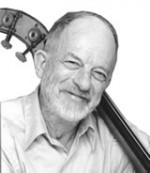Allegro
October ’14
The Band Room
Volume 114, No. 10October, 2014
Bassist Ken Rizzo often did travel dates with Julie Budd during the late 90s, usually with Kenny Hassler on drums and Art Weiss on keyboard. He took an offer to fly to Cleveland, hoping to visit the newly opened Rock & Roll Hall of Fame while he was there. But the gig was actually a long drive out of Cleveland in an industrial park in Figaro, Ohio. It was in the middle of nowhere, and the musicians were free until 8 p.m. when the gig started, so they asked their driver, a quiet, 70-something woman, to drive them around a little. One of the musicians asked her, “Is there anything to do in this town?” She stopped the car, and in a low, serious voice asked, “Do you really want to know?” When they said they did, she delightedly took them on a tour of sights related to “The World’s Tallest Man.” She drove by his house, which had over-sized doorways, showed them biographical plaques by the roadside, and then took them to the cemetery where the tallest man was buried beside his tall wife and two tall children. She filled them in with a detailed description of their short, troubled lives, their diseases, and how each of them came to die. The musicians politely endured the tour, and when it was finally over, vowed never again to ask “What is there to do in this town?”
![]()
Al Stewart noticed the name Hy Mandel in one of my recent columns, and sent me a recollection of one of his conversations with Hy:
“Hello, Al, this is Hy Mandel.”
“Hi, Hy, what’s up?”
“Are you busy Saturday?”
“So far I’m open, Hy. Why?”
“Well, we’re going to Richmond. BUT WE’RE COMING RIGHT BACK!”
“What does it pay, Hy?”
“35 bucks.”
“That’s ridiculous. I tell you what, I’ll do it for a hundred.”
“A hundred bucks? You sonofabitch, scale is only $45!”
![]()
Al Stewart also told me about a rehearsal at the Palace Theatre for the Steve and Edie show. Their conductor, Joe Guercio, stopped the orchestra and said to Boris Malina, “Trombone, can you play that part a little more like Urbie Green?” Boris replied, “If I could play like Oibie Green, believe me I wouldn’t be here vit you!”
![]()
David Dunaway was living in San Francisco some years ago, and met the late Charlie Haden in a hotel hallway. Charlie had his bass with him, and David told him he was also a bass player. Charlie uncovered his bass and asked David to play it. David says, “Though I was uncomfortable with that prospect, I played a little. Then he asked me to wait there with his bass as he had to go to the bathroom. I really just held his instrument and didn’t play it, except maybe a note or two, out of respect, and a certain shock at the circumstances. He returned after about five minutes, thanked me, and took his bass. I’ll always remember that I auditioned for Charlie Haden to hold his bass while he went to the bathroom, and got the gig!”
![]()
Glen Daum told Pete Hyde about a chart that Billy Byers wrote for the Basie band. It featured tenor man Eddie “Lockjaw” Davis, and was titled “Tetanus Sets In.”
![]()
Eddie Davis got the nickname “Lockjaw” from a record album he made for record producer Bobby Shad. For some reason, Shad named all the original tunes on the date after various diseases. The one titled “Lockjaw” became a minor hit with the jazz disc jockeys, and after that, Eddie was always identified on posters and ads with that nickname.
![]()
Zoot Sims told me how he got his nickname. When he was very young, and was still Jack Sims, he got a job with Kenny Baker’s band. Someone had lettered hep names on Baker’s music stands and the one on Jack’s was “Zoot.” It was the only one that stuck, and it stuck very well. Eventually, everyone in the jazz world knew who Zoot was. And everyone laughed when they heard that Nick Travis, waked out of a sound sleep by a call from Zoot, had asked sleepily, “Zoot who?”
![]()
Carmen Leggio was a fine saxophone player and a good friend of mine. We played many gigs together, mostly around Westchester and Fairfield Counties. In 2006 he started a Wednesday night gig in Irvington, New York, at a bistro called the Red Hat, with Hiroshi Yamazaki on keyboard and me on bass. A year later, they moved the place to a larger location in Irvington, right on the Hudson River, and our trio moved with them. After Carmen passed away in 2009, Hiroshi and I kept the jazz going at the Red Hat on the River, alternating weeks with Glenda Davenport on vocals or Takeshi Ogura on guitar. The place got washed out twice by river flooding during hurricanes, but they rebuilt and survived, and jazz is still alive there on Wednesdays. Five years after Carmen’s death, we still remember him fondly and miss him very much.

